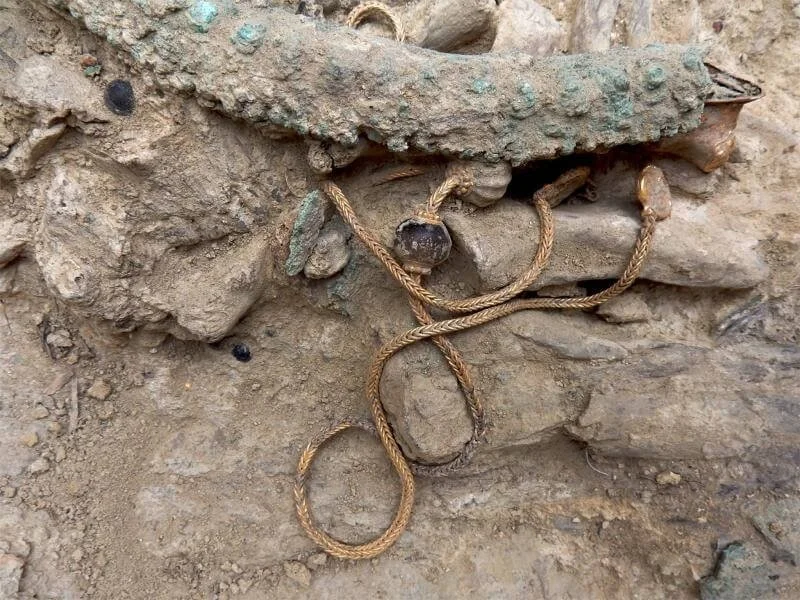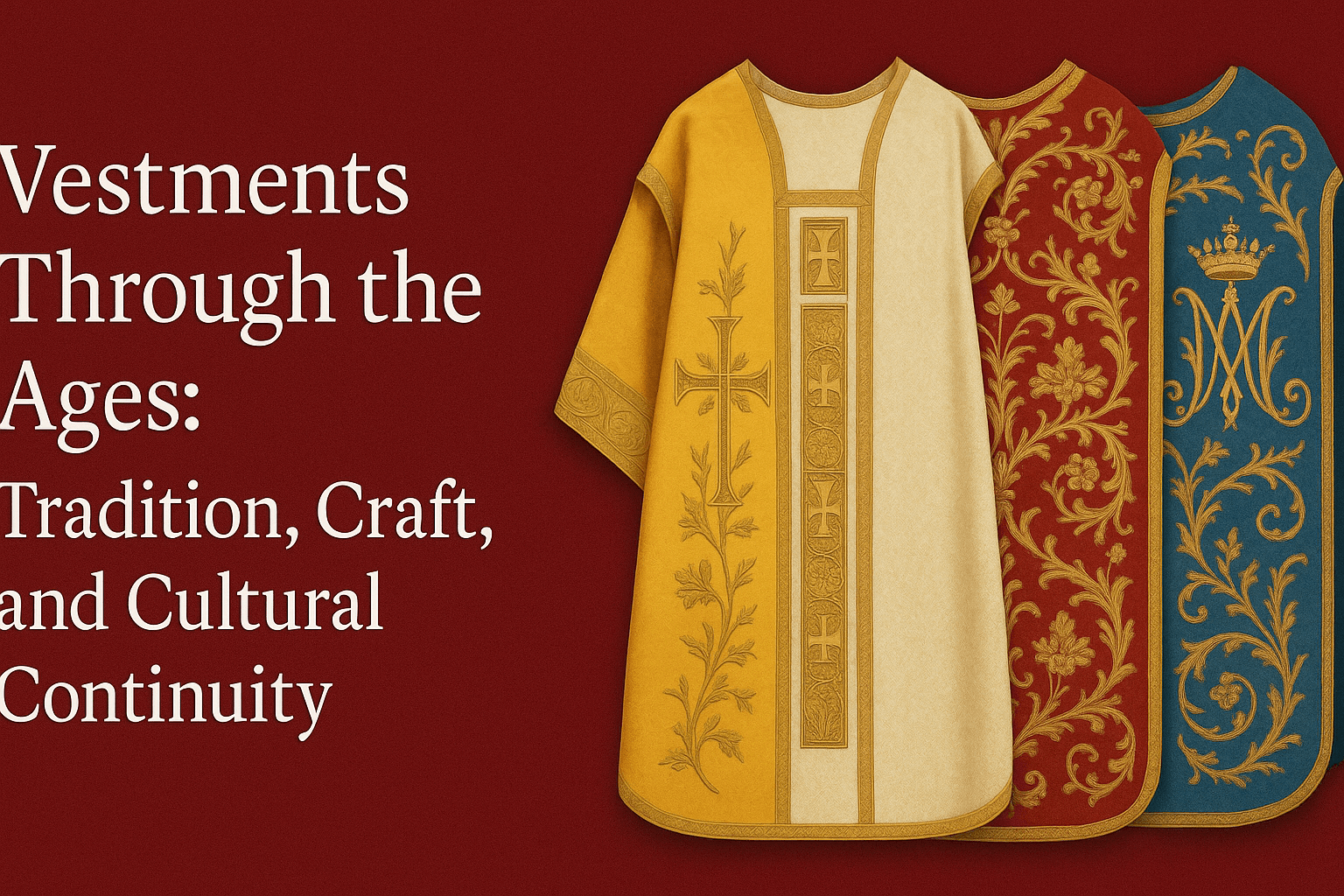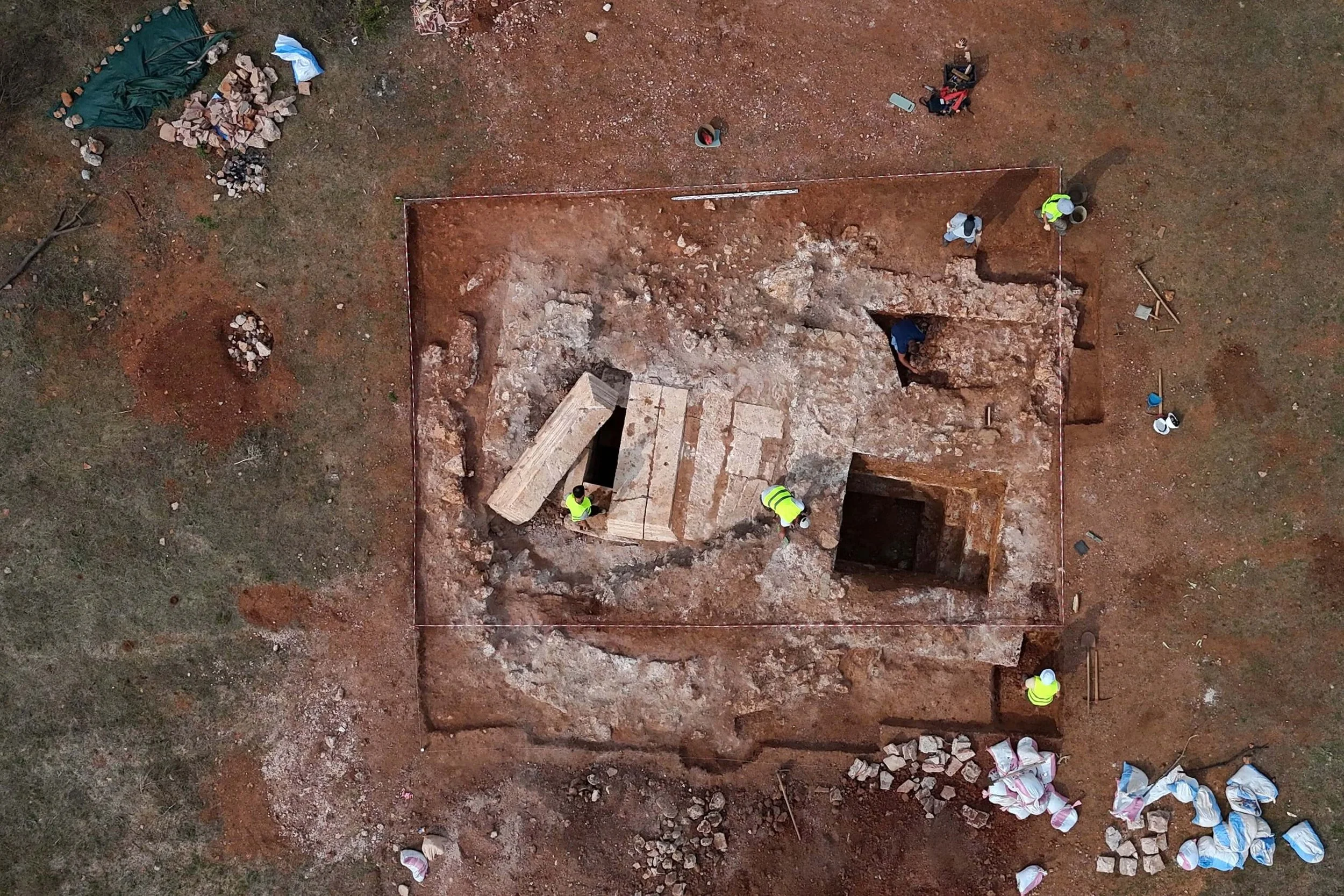Using radar waves, researchers claim to have detected mysterious cylindrical objects more than 2,000 feet below the 4,500-year-old Pyramid of Khafre in the Giza complex, Egypt.
This discovery has fueled speculation that the pyramid sits atop the fabled Hall of Records, a legendary repository of lost wisdom and knowledge from the ancient world, often linked to Egyptian tradition.
Some believe this library holds vast amounts of forgotten history about one of the most renowned civilizations in antiquity. But does it actually exist?
A Myth or a Hidden Truth?
Speaking to MailOnline, Dr. Roland Enmarch, an Egyptology scholar at the University of Liverpool, dismissed the idea as more fiction than fact.
“This theory fires up the imagination, but it is certainly not grounded in scientific reality,” he stated bluntly. “I will believe it when there is substantial and credible evidence proving its existence.”
The term Hall of Records was first introduced by Edgar Cayce, an American mystic and self-proclaimed healer, who speculated about ancient civilizations, including Egypt, El Dorado, and Atlantis. However, his claims have never been accepted by mainstream science.
Dr. Nicholas Brown, an Egyptologist at Yale University who recently published a study on Tutankhamun’s tomb, also dismissed the notion outright, comparing it to the legend of Atlantis—the mythical island described by the Greek philosopher Plato over 2,300 years ago.
“There is absolutely no evidence from ancient Egypt supporting the existence of the Hall of Records,” Dr. Brown said. “It’s a fantasy, much like Atlantis, for which no tangible proof exists.”
Skepticism from Experts
Dr. Melanie Pitkin, an Egyptologist at the University of Sydney, similarly dismissed the latest claims, downplaying the supposed findings beneath the Pyramid of Khafre.
“There are no archaeological, artistic, or literary records supporting this claim,” she told MailOnline.
Meanwhile, Dr. Jane Draycott, a lecturer in ancient history at the University of Glasgow, argued that the theory has no legitimate foundation and that scholars should focus their efforts elsewhere.
“There are many surviving temple libraries or at least their remains, so researchers would be better off studying those,” she suggested. She also labeled the alleged new findings under the Pyramid of Khafre as “complete and utter nonsense.”
Dr. Draycott further emphasized that for such claims to hold scientific weight, they must first be published in peer-reviewed journals and subjected to rigorous scrutiny by independent experts.
Questionable Sources and Discredited Claims
The purported discoveries were reported by two Italians, Corrado Malanga and Filippo Biondi, who claim to be academics affiliated with the University of Pisa and the University of Strathclyde in Scotland. However, there is no verifiable evidence of their contributions to the field of archaeology.
In 2022, they published a text describing their work using radar scans to explore the Giza pyramid complex. Images from their scans were reportedly presented at a recent conference in Bologna.
Despite gaining media attention over the weekend, their claims of vast underground libraries have been widely dismissed by experts.
Dr. Zahi Hawass, a renowned archaeologist and former Egyptian Minister of Tourism and Antiquities, denounced their assertions as “fake news” from an “amateur group.”
“All of this information is completely false and has no scientific basis whatsoever,” Hawass wrote in a Facebook post on Sunday.
“The Ministry of Tourism and Antiquities has not granted any individuals or institutions permission to conduct research inside or outside the Pyramid of Khafre,” he continued. “Moreover, the claim that radar technology was used within the pyramid is simply untrue.”
“These individuals used techniques that are neither approved nor scientifically validated, and the details they announced could never have been detected using such methods.”
Dr. Draycott also raised concerns about the credibility of the researchers behind the claims.
“I am skeptical of people who falsely claim affiliation with academic institutions, who attempt to enter disciplines in which they have no expertise, and who suddenly claim to have discovered something that all established experts have overlooked,” she stated.
“Until their findings are verified by qualified professionals with the necessary credentials, their claims remain nothing more than pseudoscience and conspiracy theory.”
Conclusion
While the legend of the Hall of Records continues to captivate the imagination, there is no credible evidence to support its existence. Leading Egyptologists and archaeologists overwhelmingly reject the idea, emphasizing the importance of focusing research on verifiable historical sites.
For now, the Hall of Records remains firmly in the realm of myth rather than historical reality.








































